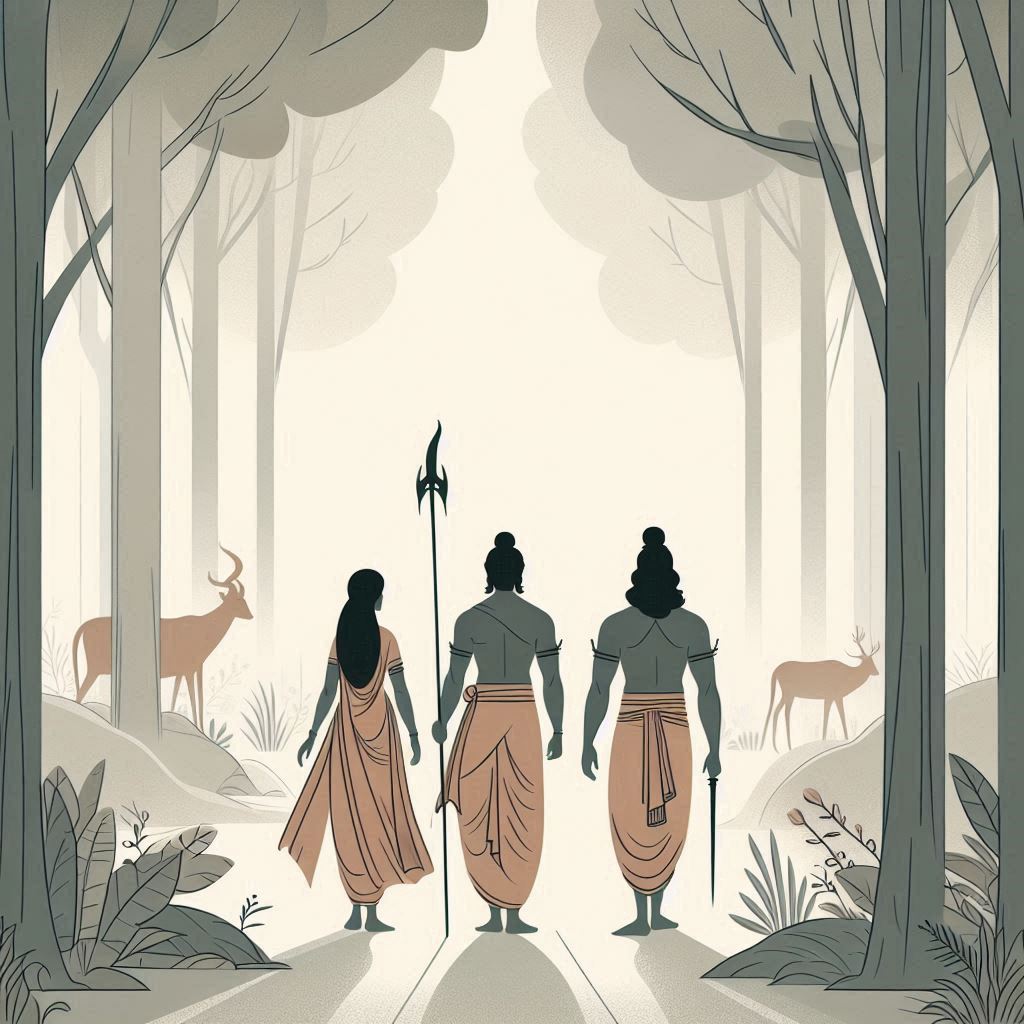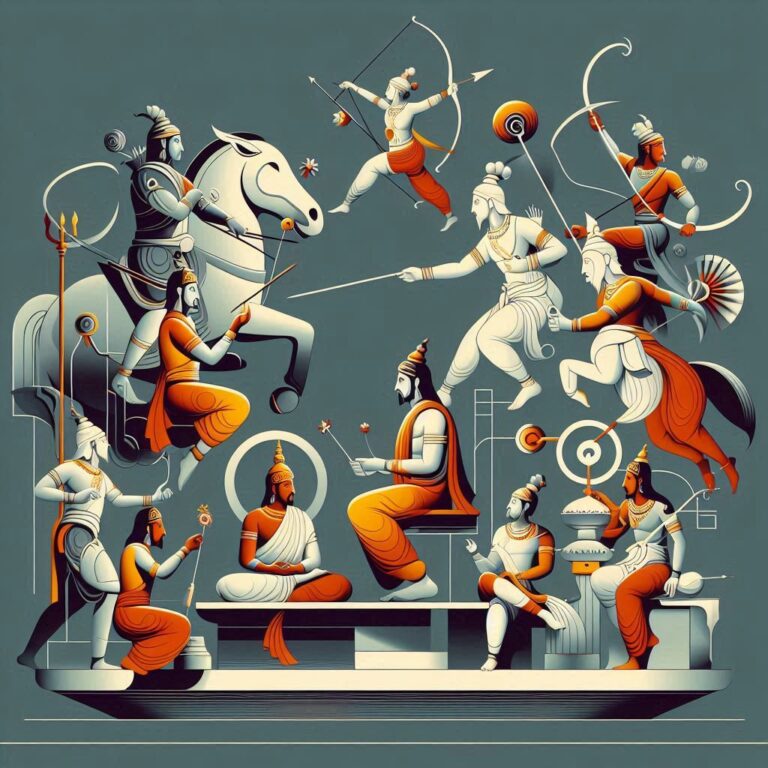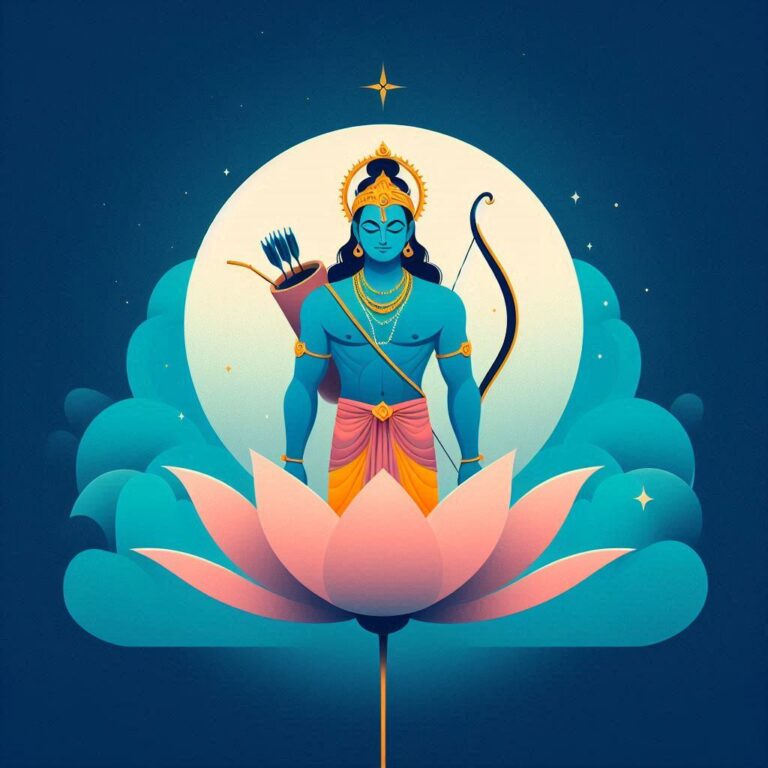Final Moments of Ramayana: A Deep Dive into Closure
Final Moments of the Ramayana: A Deep Dive into Closure
The epic tale of the Ramayana is not just a story; it’s a divine journey that resonates deeply with the cultural and spiritual fabric of India. From the heroic deeds of Lord Rama to the trials and challenges faced by Sita, the narrative is packed with lessons, devotion, and the quintessential struggle between good and evil. But what happens when the curtain falls? What are the concluding events that wrap up this magnificent saga? Let’s explore the final moments of the Ramayana and unravel the spiritual threads that weave the conclusion of this incredible epic.
The Journey Towards Closure
Every good story has an ending that leaves you both satisfied and a little wistful, right? In the case of the Ramayana, the conclusion is touching yet complex. After a long and arduous journey filled with battles, betrayals, and love, where does Lord Rama find himself?
The Return to Ayodhya
After rescuing Sita and defeating the evil Ravana, many readers often wonder, “What next?” Well, the return journey to Ayodhya is a pivotal moment. Lord Rama, along with Sita and his devoted brother Lakshmana, enters Ayodhya amidst the joyous cries of their subjects. The kingdom that had been in despair for years finally witnesses the return of their rightful king.
Imagine a long-awaited reunion—like coming home after a long trip, the warmth and love is overwhelming. That’s Ayodhya at this moment!
The Coronation Ceremony
Now, you must be curious about how the people of Ayodhya celebrated this momentous occasion. The coronation ceremony of Lord Rama is a spectral highlight of the Ramayana. It wasn’t just about Rama becoming king; it was an affirmation of dharma (righteousness) prevailing over adharma (unrighteousness).
As Rama is crowned as the king, the whole of Ayodhya rejoices. The streets are decorated, the air is filled with festive vibes, and every citizen is eager to bask in the glory of their king. But it’s not just a party; it symbolizes hope, justice, and the restoration of order in the universe.
Do we Ever Stop to Reflect?
Have you ever been to a celebration that felt more like a reflection on life than just a party? This is what the coronation does. It invites reflection on duty, sacrifice, and love—key themes that the Ramayana upholds.
The Reunion with Lakshmana and Hanuman
One of the beautiful yet poignant moments comes when Rama reunites with Lakshmana and Hanuman. Their camaraderie and devotion symbolize brotherhood and friendship. Rama, Lakshmana, and Hanuman together share an emotional moment reminiscing about the battles fought and the challenges overcome.
A Doha That Captures the Essence of Brotherhood
To encapsulate this essence, let’s reflect on a Doha that resonates with the theme of brotherhood:
सखा संग मिलित सब, दीनता न कहियो।
अकुंचित हृदय, सब के संग, यश राम बढ़ियो।
(Sakhā saṅga milita saba, dīnatā na kahiyo.
Akuñcita hṛdaya, saba ke saṅga, yaśa rāma baḍhiyo.)
Translation:
“Friends unite together, never uttering a word of weakness.
With open hearts, together they spread the glory of Rama.”
This verse beautifully encapsulates how unity and strength bring glory, further underlining the essence of friendship among Rama, Lakshmana, and Hanuman.
The Exile of Sita
Now, not all endings are joyful, right? The saga takes a tragic turn when Sita is abandoned by Rama due to societal scorn and doubts about her fidelity. This moment brings deep sorrow not only to Sita but also embodies the societal norms that often judge individuals harshly.
Why Such a Harsh Decision?
It’s a perplexing decision, considering the trials Sita endured. Why does Rama make this choice? Is it justice, is it duty, or is he adhering strictly to the expectations of a king? This moral quandary leaves the audience questioning the very fabric of duty versus love.
A Shloka Reflecting on Duty
At this juncture, a relevant Shloka comes to mind, emphasizing the weight of duty over emotion:
धर्मार्थ सुकामो यत्र, संग्रामो नते सुख।
तत्र तत्त्वविदां वाक्यं, श्रुति युक्त व्याख्यते।
(Dharmārtha sukāmo yantra, saṅgrāmo nite sukha.
Tatra tattvavidāṁ vākyaṁ, śruti yukta vyākhyate.)
Translation:
“In the pursuit of righteousness, desires may fade,
Yet, where there is battle for duty, happiness is made.”
This resonates with the burden of leadership and the harsh choices leaders must sometimes make, a theme that resonates even today.
The Ascend to the Divine
After all these trials, the Ramayana heads towards its ultimate divine conclusion. Sita, after facing the societal norms and ridicule, chooses to return to the Earth—a poignant moment where nature reunites with its beloved daughter. Rama, in his grief, acknowledges her return to the earth and finally fulfills his earthly duties.
The Final Departure
The final moments wrap up when Rama decides to leave his mortal body, illustrating his divine nature. He invites the ocean to witness his ascension, signifying the return to the cosmic home.
Imagine a leaf drifting from a tree, returning back to the soil, completing the cycle of life. Rama’s departure is symbolic of returning back to the source, completing his earthly journey.
Lessons from the Conclusion
So, what can we take away from these closing events? The Ramayana teaches us about the myriad complexities of life. It encourages us to reflect on:
- Duty and Responsibility: The importance of fulfilling one’s roles while grappling with morality.
- Love and Sacrifice: True love sometimes comes with sacrifice, which is a painful reality.
- Unity and Brotherhood: Standing by loved ones through thick and thin reinforces relationships.
Conclusion
The Ramayana is profound, imparting wisdom that spans beyond its narrative. As we witness the concluding events, it reminds us of the cyclical nature of life, love, duty, and morality. The epic doesn’t just end with Rama’s ascension; it encourages each of us to contemplate our actions and the lives we lead. As we navigate our struggles and challenges, may we embody the lessons carried through this beautiful saga.
FAQs
-
What are the key themes highlighted in the final moments of the Ramayana?
- The themes include duty, sacrifice, unity, and the complexities of love that reflect the broader struggles of human existence.
-
Why did Rama abandon Sita despite her loyalty?
- Rama’s decision reflects the harsh realities and expectations of dharma, particularly for a king, showcasing the tension between personal emotions and societal duties.
-
How does the Ramayana conclude?
- The Ramayana concludes with Rama’s ascension to the divine after Sita’s return to Earth, symbolizing the end of earthly struggles and the fulfillment of their cosmic roles.
-
What is the significance of the coronation ceremony?
- The coronation symbolizes the triumph of good over evil and reinforces the idea of restoration of dharma in society.
-
Are there any spiritual lessons learned from the Ramayana’s conclusion?
- Yes, the conclusions invoke reflections on duty over desire, the values of friendship and sacrifice, and the understanding of the transient nature of life.








